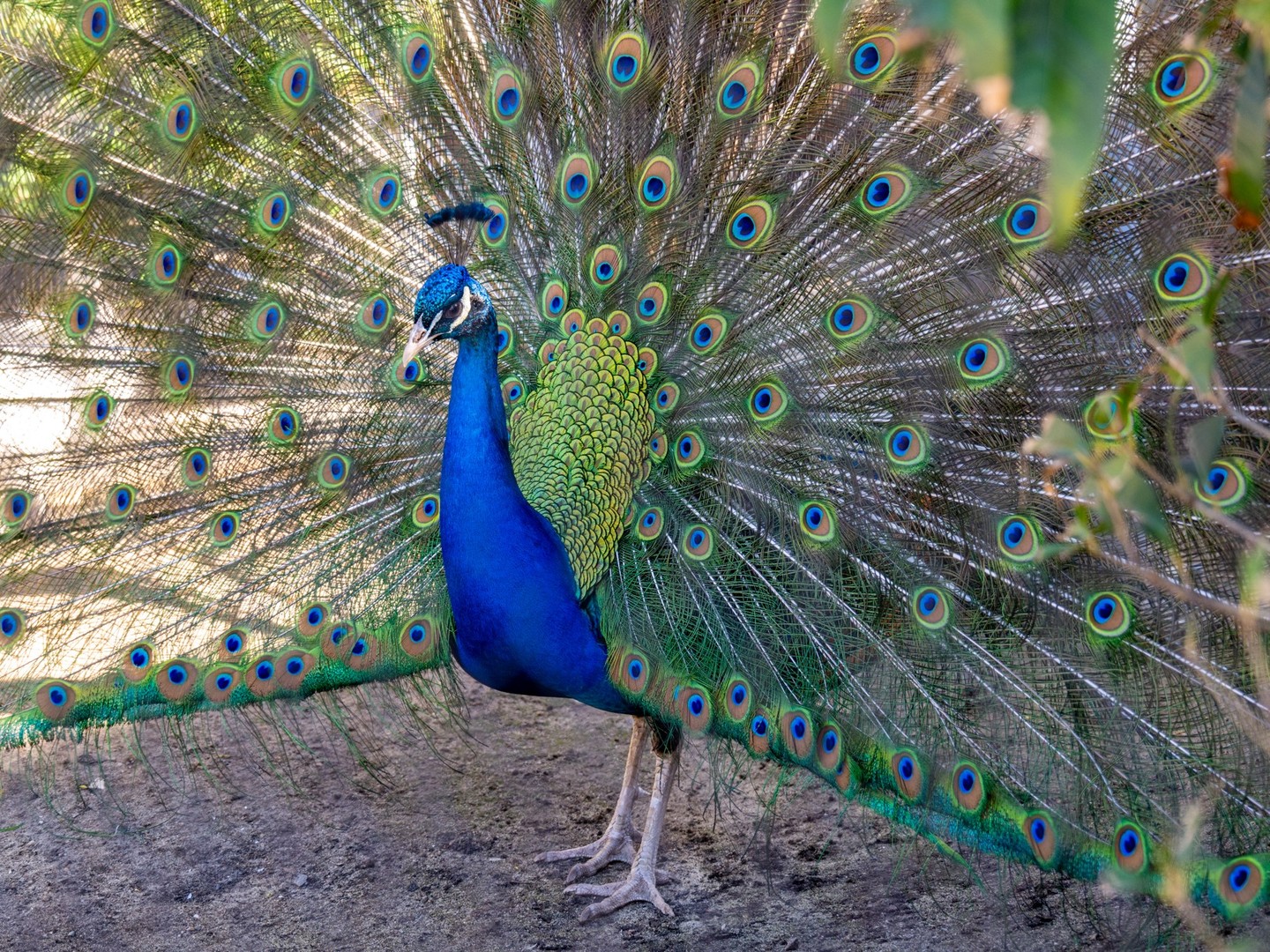- The biomechanics of peacock mating displays
- Acoustic and visual communication in peacocks
- The role of zoos in education and conservation
- Importance of adult-focused events at zoos
- Supporting wildlife conservation through community engagement
Peacocks are renowned for their splendid mating displays, during which males vibrate their tail feathers to enchant females. This spectacle, however, is far more than a simple visual appeal. At the heart of this display are biomechanics and communication intricately linked to the species’ reproductive success. Understanding the mechanics behind these displays provides insights into both evolutionary biology and animal behavior.
The biomechanics of peacock mating displays are a marvel of nature, rooted in physics and refined through natural selection. During these displays, male peacocks strategically fan out their tail feathers, or train, which can measure up to six feet in length. These feathers are vibrated rapidly, creating a dynamic shimmer that highlights eye-spots along the train. This visual effect is achieved through microscopic structures on the feathers that refract light in iridescent hues. The particular angle and speed of feather vibrations enhance these colors, making them appear more vivid and attractive to female peahens.
Acoustics play a dual role alongside visual stimuli in these displays. As the peacock vibrates its feathers, a rustling sound is produced, which is a critical component of its mating call. Different frequencies of these sounds are fine-tuned to resonate with the surrounding environment, maximizing their reach. A mix of low-frequency sounds and visual cues conveys the male’s vitality, with healthier males typically producing more robust displays. These displays serve as a form of honest signaling in evolutionary terms, indicating genetic fitness to potential mates.
Zoos play a fundamental role in educating the public about such natural wonders, providing insight into animal behavior and ecology. By showcasing peacocks and their displays, zoos cultivate awareness about biodiversity and the importance of conservation. They offer a tangible connection to species that many people would never encounter in their natural habitats. Educational programs and guided tours provide further depth, contextualizing these behaviors within broader ecological and evolutionary frameworks.
In addition to education, zoos significantly contribute to wildlife conservation. Through breeding programs, they manage and preserve the genetic diversity of species that are endangered or at risk in the wild. These efforts not only support species survival but also offer a living genetic reservoir, critical in reintroduction initiatives. Zoos also collaborate with conservation organizations to protect habitats, thus reinforcing commitments to preserving global biodiversity.
The organization of adult-focused events at zoos is a strategic approach to engage the community beyond traditional family-oriented visits. Offering events such as Adult Night provides a unique opportunity for visitors to experience the zoo in a different light, both literally and figuratively. Such events encourage social interaction and learning in a relaxed atmosphere, fostering a deeper connection to the zoo’s mission.
By engaging adults directly, zoos cultivate a supportive community that contributes to conservation awareness. These experiences often include behind-the-scenes tours, educational talks, and opportunities to learn more about the behaviors of nocturnal species or enjoy unique activities like craft beer tasting. By participating, adults gain insights into animal behavior, conservation challenges, and ways they can support these efforts personally or through advocacy.
Community engagement through events also serves to support ongoing conservation initiatives. Revenue from these activities often funds habitat restoration, research projects, and other conservation efforts locally and globally. Events build a network of conscious individuals who understand the intricate ties between humans and wildlife, encouraging proactive involvement in conservation advocacy. Further, they stimulate local economies by involving vendors and businesses, enriching the community while emphasizing sustainability.
Ultimately, the enchanting mating display of peacocks is a gateway to understanding complex concepts in zoology and conservation. It highlights the necessity of maintaining biodiversity and the interconnectedness of ecosystems. Zoos, by offering educational and engaging experiences, serve as custodians of this knowledge, essential in preserving our planet’s natural heritage for future generations. Whether attending an Adult Night at the zoo or supporting wildlife conservation endeavors, each action contributes to a greater cause, ensuring that the brilliance of peacocks and many other species continues to grace the world.
*****
Source Description
During their mating display, peacocks vibrate their tail feathers to create a shimmering appearance and rustling sound that attracts the female peahens! 🦚
Are you looking for a reason to shake your tail feathers this weekend? Join us on Saturday from 5 – 8pm for our first Adult Night of the year! 🍻 Get your buzz 🐝 on, sneak a peek at what our animals do after hours, refuel at food trucks, and shop various local vendors to celebrate springtime at the Zoo! 🌸
Visit the link in our bio for more information and to get your tickets today! This event is for adults 21+ only.


